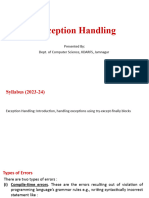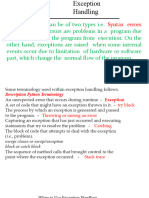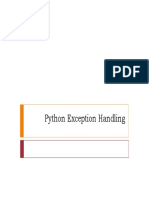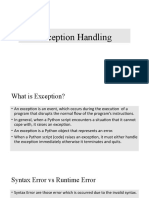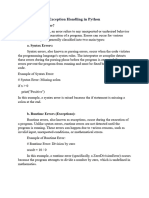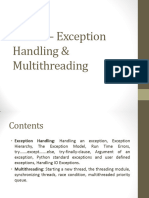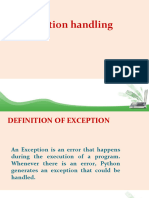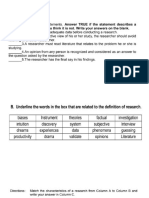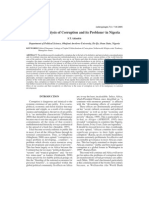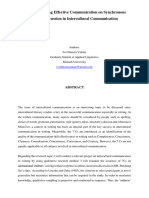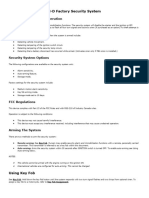0% found this document useful (0 votes)
6 views8 pagesException Handling
The document provides an overview of exception handling in Python, explaining how to manage errors that occur during code execution to prevent program crashes. It categorizes errors into syntax errors and logical errors (exceptions), detailing how to use try, except, else, and finally blocks to handle these exceptions effectively. Additionally, it discusses raising exceptions and creating user-defined exceptions for better error management.
Uploaded by
Sangeetha reddy Sangeetha reddyCopyright
© © All Rights Reserved
We take content rights seriously. If you suspect this is your content, claim it here.
Available Formats
Download as PDF, TXT or read online on Scribd
0% found this document useful (0 votes)
6 views8 pagesException Handling
The document provides an overview of exception handling in Python, explaining how to manage errors that occur during code execution to prevent program crashes. It categorizes errors into syntax errors and logical errors (exceptions), detailing how to use try, except, else, and finally blocks to handle these exceptions effectively. Additionally, it discusses raising exceptions and creating user-defined exceptions for better error management.
Uploaded by
Sangeetha reddy Sangeetha reddyCopyright
© © All Rights Reserved
We take content rights seriously. If you suspect this is your content, claim it here.
Available Formats
Download as PDF, TXT or read online on Scribd
/ 8




